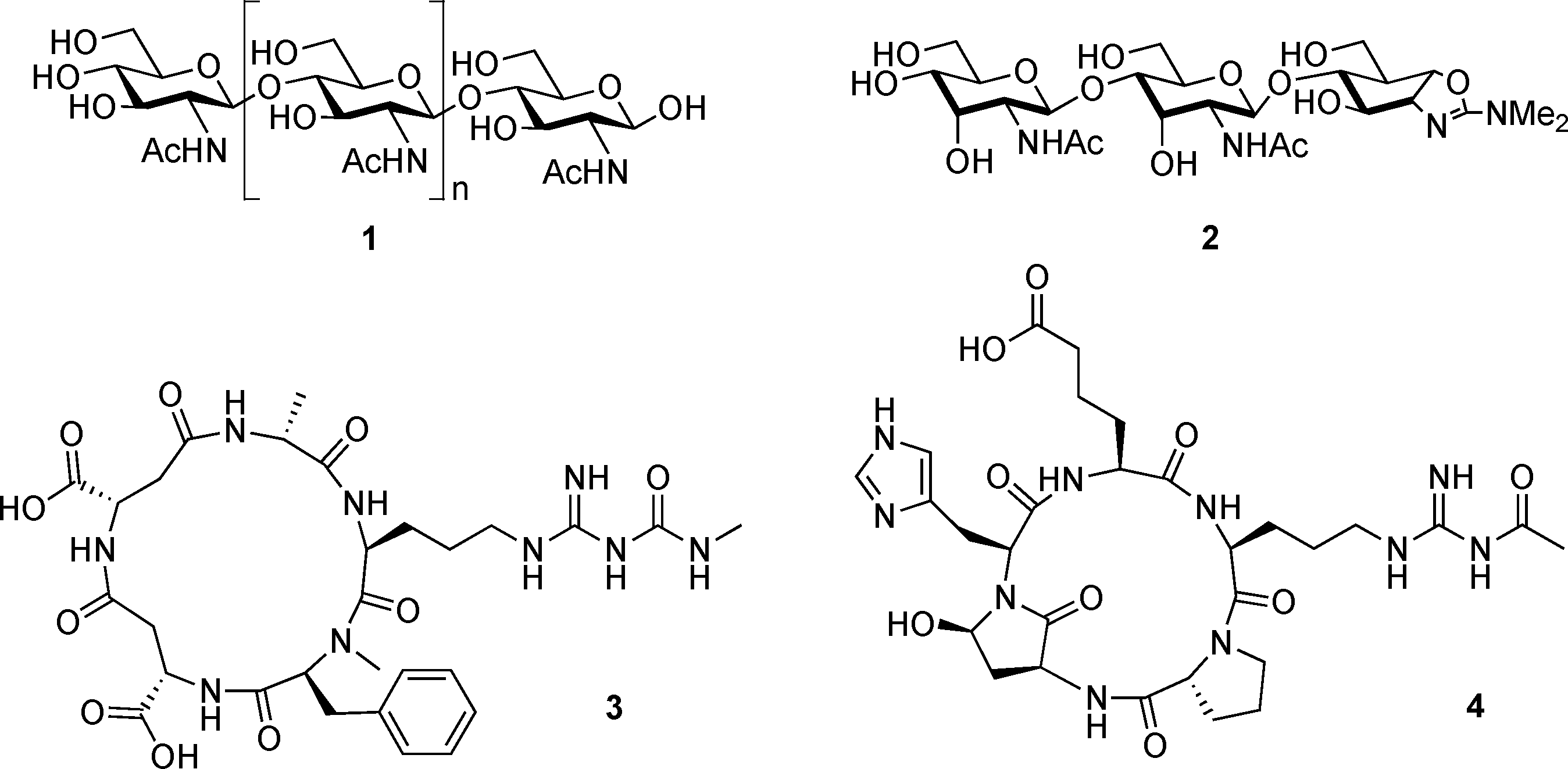Allosamidin
CAS number: 103782-08-7
Allosamidin, a chitinase inhibitor produced by. Streptomyces, acts as an inducer of chitinase production in. its producing strain.
Related images
Related Questions and Answers
A: Allosamidin and demethylallosamidin bind to chitinase-like proteins such as Ym1 and BRP-39, which are upregulated in asthma models. These proteins are involved in eosinophil chemotaxis and Th2 cytokine production. The binding of allosamidin to these proteins may inhibit their pro-inflammatory functions, contributing to its anti-asthmatic activity.
A: Allosamidin and demethylallosamidin exhibit anti-asthmatic activity by inhibiting acidic mammalian chitinase (AMCase). Demethylallosamidin is more effective than allosamidin in reducing eosinophil counts, eotaxin concentration, and airway hyperresponsiveness in an IL-13-induced asthma mouse model. This suggests that demethylallosamidin has superior potential as an anti-asthmatic agent.
A: Allosamidin enhances chitinase production in Streptomyces by acting through a two-component regulatory system. It binds to the sensor region of Chi65S, which then activates Chi65R, leading to increased expression of the chi65 gene. This results in higher production of the 46 kDa and 105 kDa chitinases. The effect is observed in various Streptomyces strains, indicating a general regulatory mechanism.
A: Allosamidin promotes the production of chitinases in Streptomyces by acting as a signal molecule. It enhances the expression of the chi65 gene, which encodes a 46 kDa chitinase, through a two-component regulatory system involving Chi65S and Chi65R. This effect is observed in both allosamidin-producing and non-producing Streptomyces strains, suggesting a general regulatory mechanism for chitinase production in Streptomyces.
A: Allosamidin inhibits family 18 chitinases by mimicking the oxazolium ion intermediate formed during the enzymatic reaction. The allosamizoline moiety of allosamidin binds to the active center of the enzyme, preventing the normal hydrolysis of chitin. This binding is supported by theoretical, NMR, X-ray crystallographic, and thermodynamic studies.
A: Allosamidin has a pseudotrisaccharide structure composed of two N-acetyl-D-allosamine moieties and one allosamizoline moiety. The biosynthesis of allosamidin involves the incorporation of D-glucosamine molecules for allosamine and the 2-aminocyclitol skeleton, while the (CH3)2N-C moiety of allosamizoline originates from a methyl group of L-methionine and a guanidino group of L-arginine. The cyclopentane ring of allosamizoline is formed through a 6-aldehyde intermediate.
A: Allosamidin binds in a groove on the human chitinase, occupying subsites -3 to -1, with the allosamizoline moiety occupying the -1 subsite. Tight interactions are formed with the allosamizoline, which is lined with conserved residues. Specifically, Trp-358 stacks with the allosamizoline's hydrophobic face, and residues like Tyr-27, Phe-58, Gly-98, Ala-183, Met-210, and Met-356 contribute to a hydrophobic pocket for its methyl groups. Hydrogen bonds are also formed, for example, with Asp-138, Trp-99, Tyr-212, and Asp-213.
A: Allosamidin is a broad-spectrum inhibitor that effectively inhibits family 18 chitinases, showing biological activity against insects, fungi, and the Plasmodium falciparum life cycle. Its strong inhibitory properties are due to its structure mimicking an oxazoline intermediate, which is unique to the reaction mechanism of family 18 chitinases.
